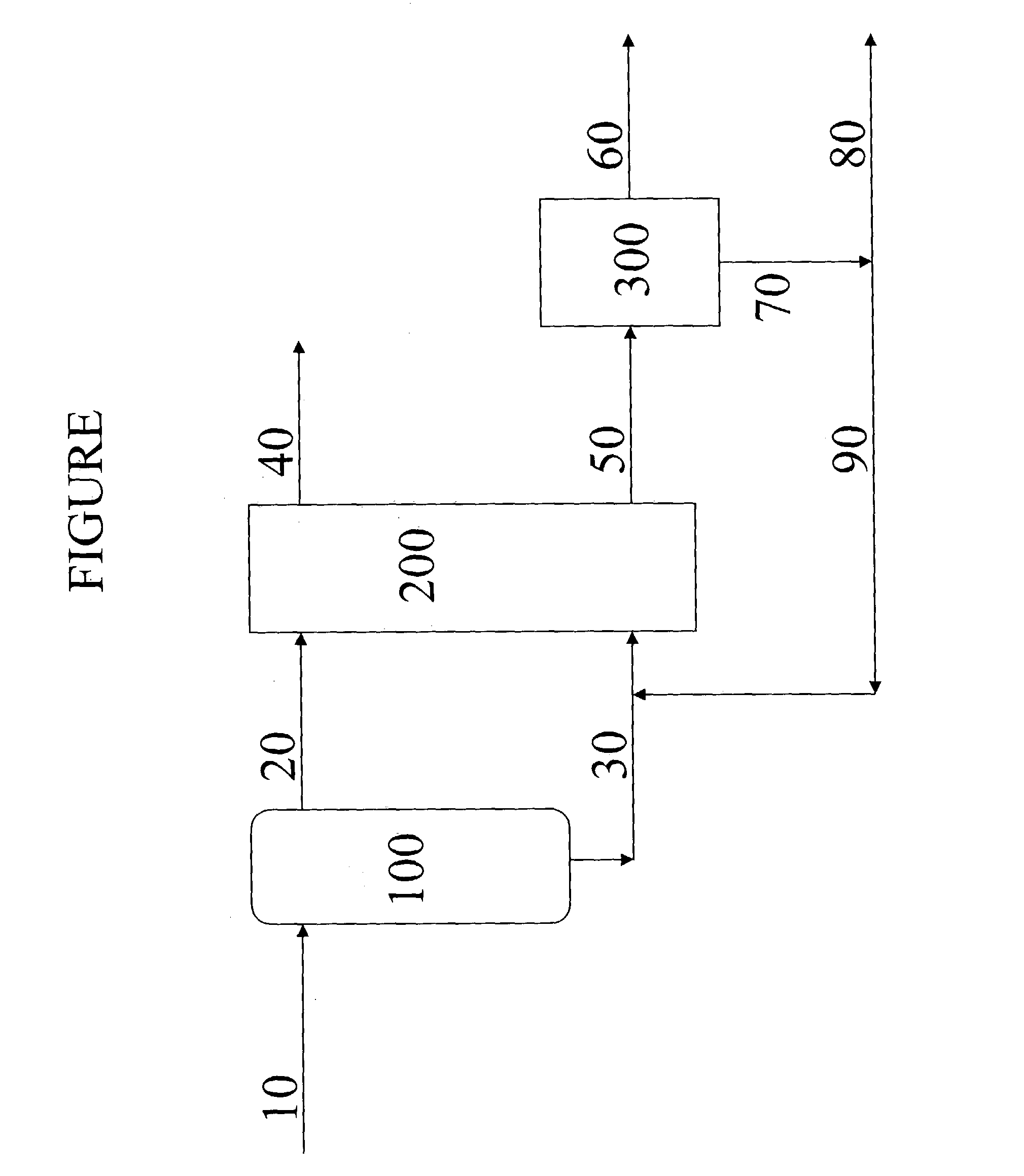Isomerization/dehazing process for base oils from Fischer-Tropsch wax
a technology of base oil and wax, which is applied in the field of preparing lubricant base oil, can solve the problems of inability to effectively hydroisomerize a broad boiling range of hydrocarbonaceous feedstock to produce both heavy and light lubricants, and increasing production cost and complexity
- Summary
- Abstract
- Description
- Claims
- Application Information
AI Technical Summary
Benefits of technology
Problems solved by technology
Method used
Image
Examples
illustrated embodiment
[0066]The FIGURE illustrates a schematic representation of one embodiment of the present invention. Referring to the FIGURE, a fresh paraffinic feed 10 (e.g., a Fischer-Tropsch derived feedstock) is fractionated in fractionation zone 100 into a light lubricant base oil fraction 20 and a heavy fraction 30. The light lubricant base oil fraction 20 and the heavy fraction 30 are alternately hydroisomerized under hydroisomerization conditions in hydroisomerization zone 200, which contains a medium pore size molecular sieve catalyst. The hydroisomerization zone 200 is operated such that: (1) the isomerized light lubricant base oil fraction 40 has a pour point less than or equal to the target pour point of the lubricant base oils; (2) the isomerized light lubricant base oil fraction 40 has a viscosity index of greater than 130, preferably greater than 140, more preferably greater than 150; and (3) the isomerized heavy fraction 50 has a pour point of equal to or greater than the target pour...
PUM
 Login to View More
Login to View More Abstract
Description
Claims
Application Information
 Login to View More
Login to View More - R&D
- Intellectual Property
- Life Sciences
- Materials
- Tech Scout
- Unparalleled Data Quality
- Higher Quality Content
- 60% Fewer Hallucinations
Browse by: Latest US Patents, China's latest patents, Technical Efficacy Thesaurus, Application Domain, Technology Topic, Popular Technical Reports.
© 2025 PatSnap. All rights reserved.Legal|Privacy policy|Modern Slavery Act Transparency Statement|Sitemap|About US| Contact US: help@patsnap.com


